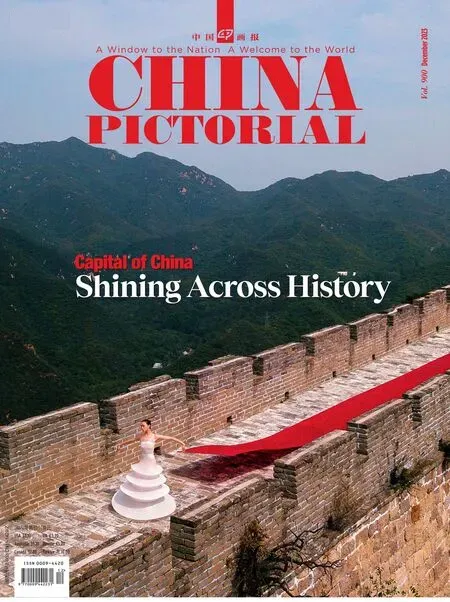Culture in Beijing:Inheritance and Innovation
Text by Zhou Chenliang
The culture of Beijing has evolved alongside the development of Chinese civilization.
The historical and cultural richness of a city forms its essence,exudes its charm,and symbolizes its distinctive character.In recent years,Beijing has positioned the creation of a national cultural center at the forefront of the capital’s development in the new era.From traditional operas to contemporary performances,and from traditional clubs to internationally acclaimed theatres,Beijing’s cultural landscape has evolved in tandem with the unfolding narrative of Chinese civilization.
Significant Cultural Landmarks
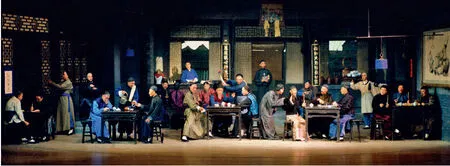
Still from Teahouse (1979).(Photo courtesy of Beijing People’s Art Theatre)
The Beijing People’s Art Theatre (BPAT) stands as a shining beacon of Chinese drama.Since its establishment at 22 Wangfujing Street in 1956 with the inauguration of the Capital Theatre,this venue has graced the stage with renowned productions such asSunrise,Thunderstorm,andTeahouse.These performances not only showcased the creative brilliance and acting mastery of the older generation of theatrical masters but also inspired the emergence of numerous new works that highlight the explorative endeavors of young and middleaged directors and actors.Over the years,the BPAT has not only captivated countless spectators but also effectively conveyed the allure of theatrical art.
In pursuit of fostering a more dynamic conversation between Beijing’s cultural scene and the global arena,the BPAT undertook an eastward expansion project.The contemporary facade of the newly built Beijing International Theatre Center now seamlessly complements the dignified architecture of the Capital Theatre.At the heart of the Beijing International Theatre Center is the Cao Yu Theatre,named after one of the founders of the BPAT.The new Cao Yu Theatre premiered with a highly-anticipated new version ofSunrise.The play signifies not only a contemporary reinterpretation of classics but also a timely response to the current era.Despite the passage of time and changing landscapes,Sunrisecontinues to offer profound insights into society and delicate portrayals of human nature.
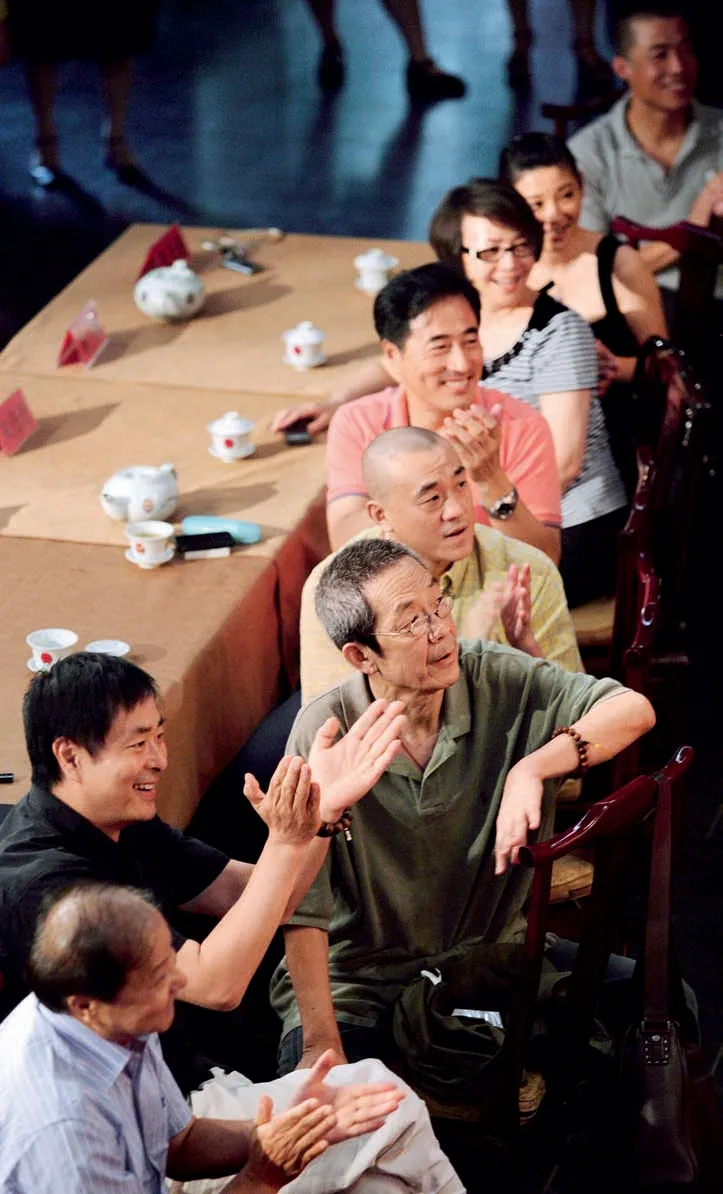
The director and cast of Wotou Club,presented by the Beijing People’s Art Theatre,at the press conference for the release of the drama in 2009.The production unfolds the poignant tales of joy and sorrow,union and separation among four households in a small courtyard in Beiping (today’s Beijing) before the founding of the People’s Republic of China in 1949.(Photo by Zhang Wei)
As widely recognized,the term “Zhongguo” (the name of China in its own language)has ancient roots.However,few know that the earliest tangible evidence of this term was unearthed in Baoji,Shaanxi Province.The cultural artifact in question is the bronze ritual wine vessel “He Zun” from the early Western Zhou Dynasty (1046-771 B.C.),featuring an inscription that can be translated as “Reside in Zhongguo.” This exceptionally rare cultural relic is currently housed at the headquarters of the China National Archives of Publications and Culture in Beijing.
The headquarters of the China National Archives of Publications and Culture provides a firsthand look at the splendor of full-scale replica facsimiles and original woodblock printed editions of monumental works such asSiku Quanshu(Complete Library in Four Sections),a collection of Chinese classical works.There,you can immerse yourself in the magnificent tapestry of cultural exchange and mutual learning,while appreciating artifacts that have endured through various historical periods along the Maritime Silk Road.You can also delve into the imprints of the great times depicted in exquisite publications since the inception of reform and opening up in the late 1970s.The digital exhibition hall seamlessly blends cutting-edge technology with traditional culture,inviting visitors to actively participate in a diverse array of vibrant cultural activities.
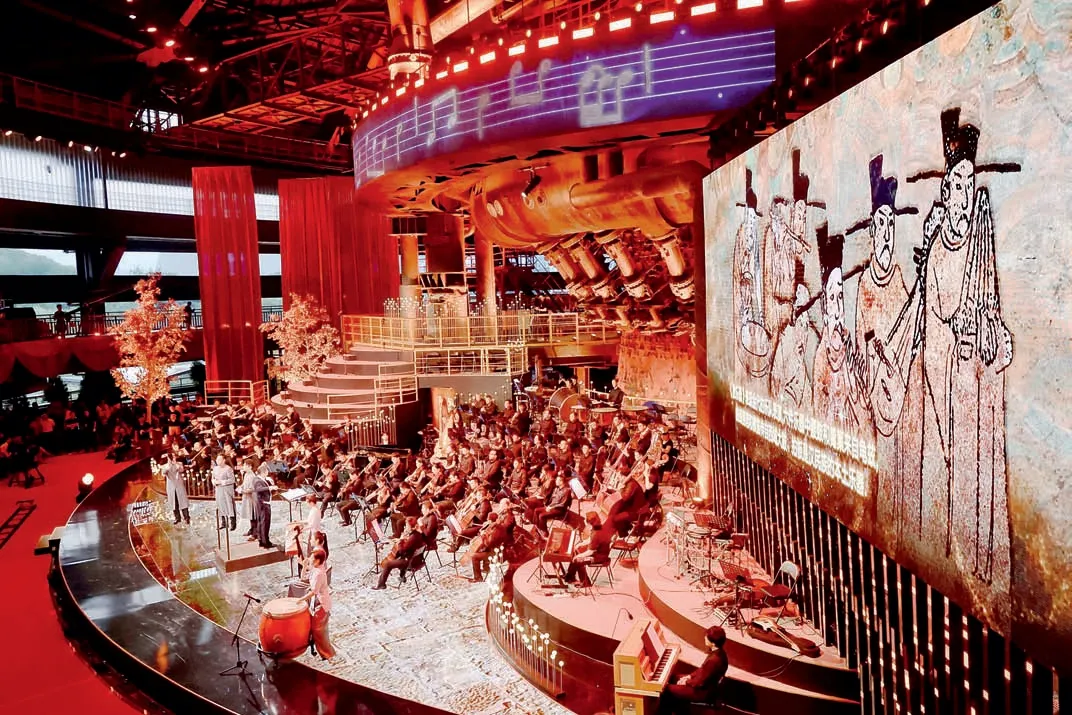
The 2023 Beijing Xishan Yongding River Cultural Festival opens in Shougang Park with a large-scale immersive orchestral performance featuring poetry and painting,June 25,2023.(Photo by Yi Haifei/China News Service)
In Universal Beijing Resort,you can embark on a journey to unravel the secrets of Hogwarts castle,indulge in the flavors of Butterbeer and Chocolate Frogs,engage in adrenaline-pumping“battles” with Autobots and Decepticons,take selfies with Megatron,or venture on a rugged off-road expedition to explore Nublar Island while keeping a watchful eye for the attacks of the ferocious Tyrannosaurus Rex.Since its opening in September 2021,Universal Beijing Resort has provided millions of visitors an immersive experience through its theme park,solidifying its position as a new cultural and tourism landmark in Beijing.As the world’s largest Universal Studios theme park now operational,Universal Studios Beijing offers all of the most sought-after ride attractions,iconic landmarks,and live performances from Universal Studios projects worldwide.The Universal CityWalk has evolved into one of Beijing’s largest shopping districts,making a substantial contribution to the city’s thriving “first-store economy.”
Inheritance-based Innovation
Intangible cultural heritage is a jewel within the tapestry of China’s rich traditional culture.While many hold a stereotypical view associating heritage with the word “old,” a shift is underway.Today,an increasing number of young individuals are not only becoming practitioners but also enthusiasts of intangible cultural heritage.They have formed a stable consumer base that injects vitality into the ongoing development of these cultural treasures.

Beijing is one of the important birthplaces of traditional Chinese medicine (TCM) culture.In recent years,the Beijing municipal government has attached great importance to the inheritance and development of TCM culture.They have formulated a series of policies and measures to promote the high-quality development of TCM and its related industries.(Photo courtesy of Beijing Foreign Cultural Exchange Center)
Lang Jiaziyu is a 28-year-old practitioner deeply entrenched in the world of intangible cultural heritage.Since the tender age of four,Lang has dedicated over two decades to perfecting the art of crafting dough figurines.On his display stand is an array of endearing figures including the playful mascots of the Beijing 2022 Winter Olympic and Paralympic Games “Bing Dwen Dwen” and “Shuey Rhon Rhon,” the spirited and untamed Ne Zha,and characters from the Japanese sports mangaSlam Dunk.
“Simply riding current trends is not enough to capture the attention of the younger generation,” said Lang.“The craftsmanship must continually innovate.My current works blend traditional techniques with Western sculpture and craft art,making my dough figurines more like resin model kits of anime figures.”
Lang’s rise to fame is not an isolated case.Behind individual efforts is a concerted push from the Beijing municipal government through policies,regulations,and specific actions aimed at promoting the protection and development of intangible cultural heritage.In 2019,Beijing promulgated and implemented theRegulations on Intangible Cultural Heritage,which specified that relevant departments including the Beijing Municipal Bureau of Culture and Tourism should support the development and application of new technologies and new media to disseminate intangible cultural heritage.
The “Eight Imperial Handicrafts” in Beijing trace their origins to the imperial court,representing the epitome of royal exclusivity,marked by an unwavering commitment to impeccable craftsmanship and visionary design principles.Consider the art of gold lacquer inlay,for instance.This intricate process encompasses a series of techniques such as gold lacquer painting,inlaying,carving and filling,and ash engraving.The step of gold lacquer painting alone involves using a variety of colored lacquers and gold and silver powders as pigments.Specially crafted brushes are employed to meticulously apply lacquer through several processes,resulting in a mesmerizing interplay of intricate,vibrant,and grandiose patterns.
Members of the Eight Imperial Handicrafts Association are now actively exploring avenues to integrate intangible cultural heritage into the market and unlock its cultural potential.“The younger generation of intangible cultural heritage inheritors needs to transition from behind-the-scenes roles to the forefront,” said Bai Qun,director of the Beijing Eight Imperial Handicrafts Museum.“This move aims to increase public awareness of cultural heritage.Through collaborations across diverse sectors,we can infuse new design elements,thoughts,and youthful vigor into intangible cultural heritage creations,ensuring that these works resonate with contemporary aesthetic preferences.”
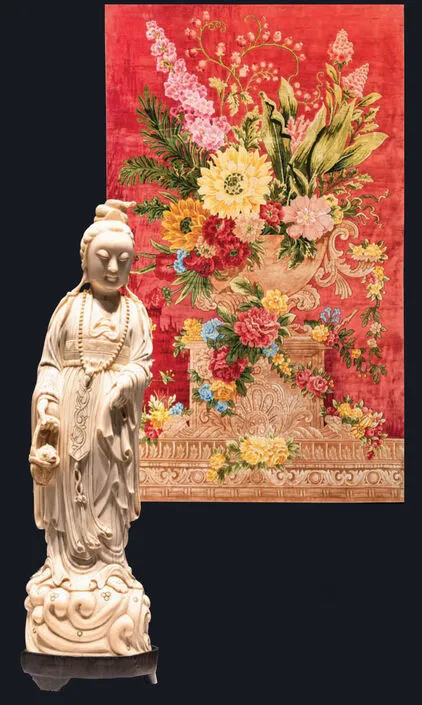
The Qing Dynasty ivory carving “Guanyin with a Fish Basket” (left) and the palace tapestry “Flower Terrace” (right) are both exquisite maste rpieces representing the “Beijing Eight Imperial Handicrafts.”(Photo by Qin Bin)
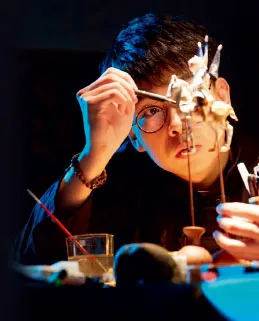
As a unique folk art of Beijing,dough figurine sculpting is beloved by the public for its vivid folk characteristics and intriguing lively designs.(Photo courtesy of Lang Jiaziyu)
Thanks to the support of a wealth of resources,Beijing’s emerging talent in intangible cultural heritage is poised to grow and contribute significantly to the establishment of a Beijing model for protection and inheritance of intangible cultural heritage.

